
 |
Recent Books by Forum Members |

 |
 |
|
|
|||||||
 |
|
|
Thread Tools | Display Modes |
|
#16
|
||||
|
||||
|
The following collection of NZ Reinforcement badges features on page 17 of the book Historic Trentham, which was written by Will Lawson (New Zealands leading poet) and printed by the Wellington Publishing company.
(First edition was was released on the 1st September 1917) I will post more about this particular collection at a later date in a thread that will discuss the history of WW1 NZ Reinforcement badges and the artists who designed them. 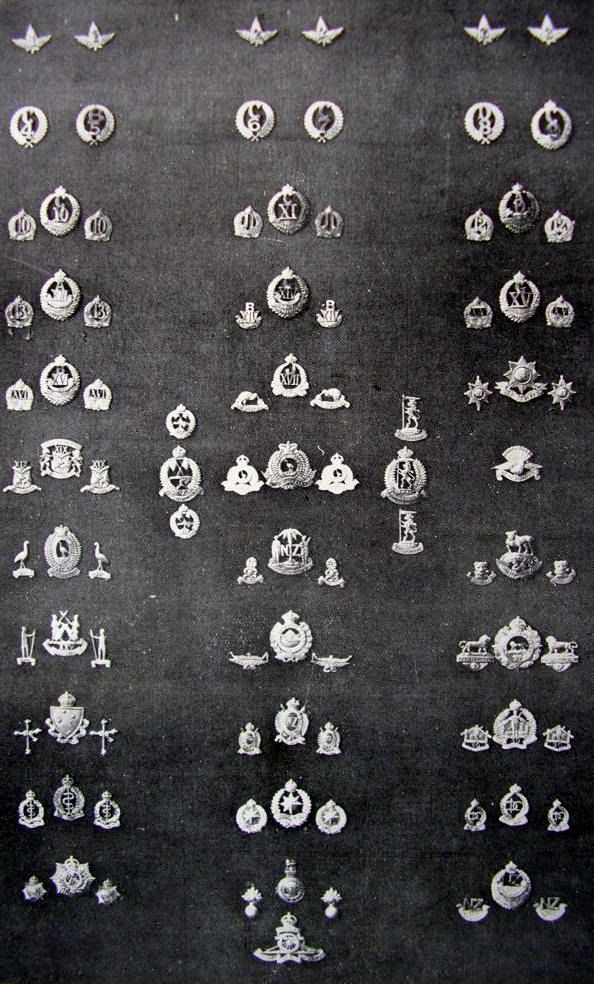
|
|
#17
|
||||
|
||||
|
Private Donald Campbell Sutherland, 23rd Reinforcements Specialist Company, Machine-Gun Section
Donald Campbell Sutherland, (Service No. 39414) and business partner Alexander Dean Thomson (Service No. 42723) were successful building contractors who sacrificed their prospects, sold up their business, enlisted together, and both friends embarked on the 2nd April 1917. Private Thomson serving with the NZ Rifle Brigade was killed shortly after reaching France. Donald Sutherland having taken part in most of the New Zealand engagements during 1917 and up until April 1918, was wounded but survived the war. While serving at the front, Private Sutherland sent a collection of 36 badges.— “ English, Scottish, Irish, French and Colonial regiments”— to his uncle Hugh McLeod who lived in Yellow Bluff, Otautau. Private Sutherland's badge collection was publicly displayed at the “War Funds Association Flower Show” held on the 26th and 27th February 1918. Colonel Harry Rowland Potter, N.Z. Staff Corps, Camp Commandant of Trentham Camp. On page 53 of the handbook “New Zealand Reinforcement Badges 1914 – 1918” by Geoffrey J. Lowe, it shows a collection of NZ reinforcement badges worn at Trentham camp that belonged to Colonel H. R. Potter. I will post more about this particular collection at a later date in a thread that will discuss the history of WW1 NZ Reinforcement badges and the artists who designed them. The Potter collection was publicly displayed in the Lambton-quay window of book sellers Whitcombe and Tombs, in connection with the second edition of the book Historic Trentham which went on sale in March 1918. Colonel Potter's collection was mounted on a black background and framed in oak. 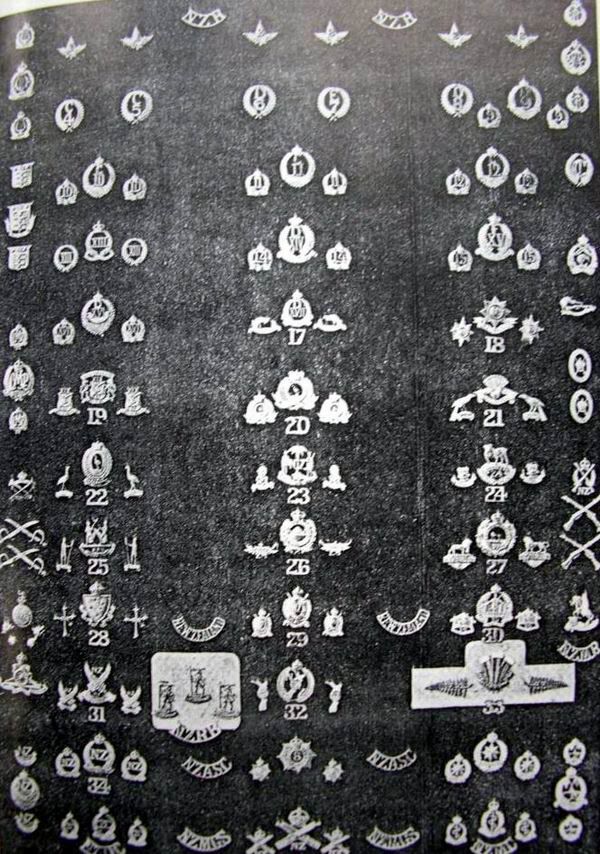
Last edited by atillathenunns; 17-11-12 at 09:56 PM. |
|
#18
|
||||
|
||||
|
Staff Quartermaster-Sergeant C. B. Gibbs, N.Z.A.O.D., Trentham Camp Quartermasters Department.
Unfortunately Staff Quartermaster-Sergeant C. B. Gibbs, (Charles Barnabas Gibbs, Service No. 24610?) service records are currently not available online at NZ archives. However, from what little I have pieced together, it appears that prior to his enlistment Sergeant Gibbs worked for Common, Shelton and Company in Gisborne, and was an active member of the Gisborne Masonic brethren. It also appears that Gibbs enlisted for the front, but owing to an injured wrist, he was unable to pass the army medical exam for service abroad. Still wanting to do his part, Gibbs volunteered for a position with the Wellington Records Office so as to enable a physically fit man to get away on active service. Until Gibbs service records become available, I can only speculate that in early March 1916 Gibbs was called into Trentham Camp and was attached to the Records Office as part of the Headquarters Staff . In April 1916, Private Gibbs was promoted to corporal, and in July 1916 was again promoted to sergeant (Headquarters Staff, Records Office). In January 1917, Gibbs was promoted to Company Sergeant-Major (Headquarters Staff, Field Officers' Mess). In September 1918, Gibbs was promoted to Staff Quartermaster-Sergeant (Headquarters Staff, Camp Quartermaster's Department). The badge collection of Sergeant Gibbs is prominently placed on page 3 and page 5, in the book “The New Zealanders at Gallipoli” by Major Fred Waite, which was printed and published under the Authority of the New Zealand Government by Whitcombe and Tombs. The New Zealanders at Gallipoli book was the first of four NZ WW1 official history volumes that were produced, and was first put on sale on the 27th December 1919. (Major Fred Waite was Chief Engineer Instructor, N.Z.E.F. Training Camps, 1916–18)  
Last edited by atillathenunns; 18-11-12 at 07:05 PM. |
|
#19
|
||||
|
||||
|
Although it is not technically a badge collection, the following poster deserves mention as it cearly shows there was a demand for information about insignia that was worn by the NZEF during WW1.
According to the National Library of New Zealand, the 'photolithograph' of the “Record of the New Zealand Expeditionary Force in the Great War” was published by “the Government Life Insurance Department. [ca1919]” Unfortunately, the poster itself offers very little in the way of the date it was first printed, and who was responsible for printing it. Fortunately, the poster does have the artists name (D. Moule, Del) in the bottom right corner. This suggests to me the artwork was done by Mr Douglas Moule of Victoria Australia, who was also the artist for the “Record of the Australian Imperial Force in the Great War” poster. The printers that produced the“Record of the Australian Imperial Force in the Great War” poster, was Osboldstone and Company of Melbourne Australia. As such, it is most probable that they were also the printers of the New Zealand Record poster. Interestingly, the artist has used the wrong badge for the 5th Wellington Regiment (part of the Samoan Expeditionary Force). The badge illustrated wasn't issued until 1923, when the 5th Wellington's were redesignted as “The Wellington Regiment.” 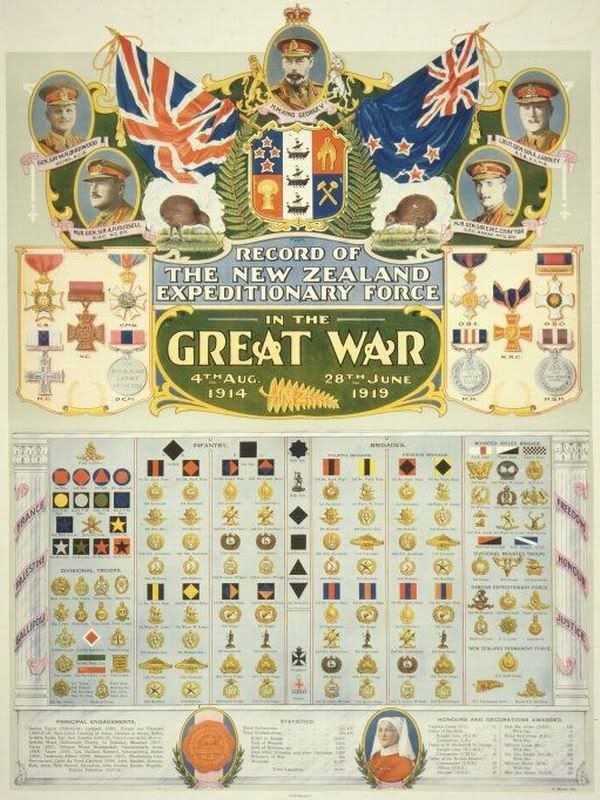 The following framed collection was recently offered on our local auction site “trademe,” interestingly it has a brass plaque with the inscription “Caps & Collars NZEF 1914- 1918” http://www.trademe.co.nz/Browse/List...x?id=531677879 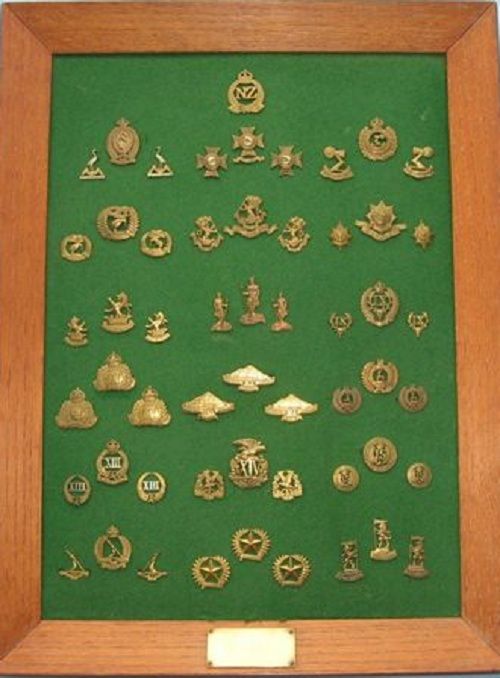 It seems that even modern day collectors are still getting it wrong.  The correct badge for the 5th Wellington Regiment can be seen in the badge collection of Sergeant Gibbs in the previous post. (2nd picture, top right corner) Last edited by atillathenunns; 27-11-12 at 11:23 AM. |
|
#20
|
||||
|
||||
|
The following well thought out collection was recently displayed by Hemi Tahu at a monthly meeting of the Wellington Militaria Collectors Club.
As can be seen the display has been influenced by the “Record of the New Zealand Expeditionary Force in the Great War” poster that is pictured in my previous post. Good to see that Hemi has used the correct 5th Wellington Regiment badge in his display. 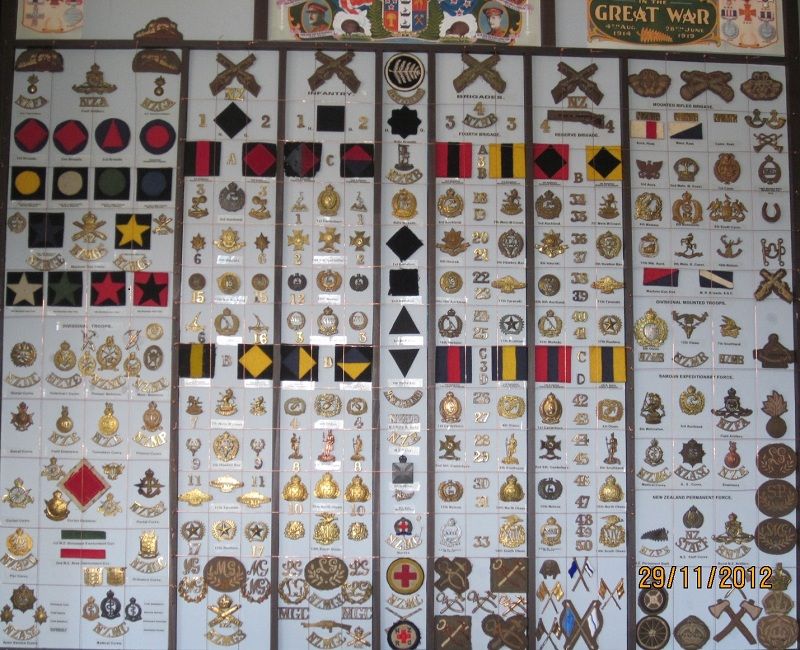
Last edited by atillathenunns; 29-11-12 at 06:06 AM. |
|
#21
|
||||
|
||||
|
The following photogaph is part of the “Royal New Zealand Returned and Services' Association Collection, which is located at the Alexander Turnbull Library in Wellington.
The photograph is believed to have been taken possibly at Pont-a-Pierre in France, sometime in late 1918 by Henry Armytage Sanders. 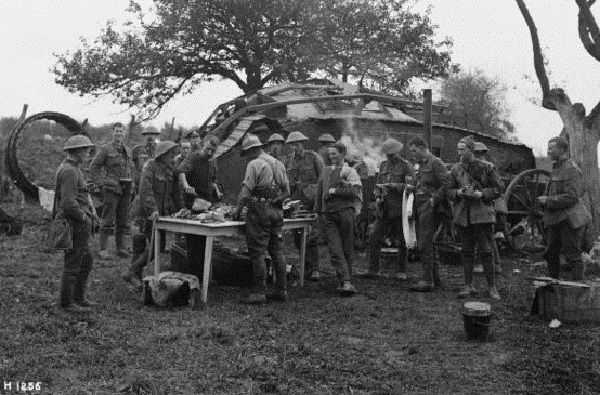 Zooming in a bit, we can see a New Zealand field kitchen postioned behind a destroyed British tank, two soldiers are cutting food on a table while others wearing 1st Canterbury Regiment collar badges are waiting patiently. (The chap wearing the Service Dress cap at the back seems to be wearing an artillery badge) 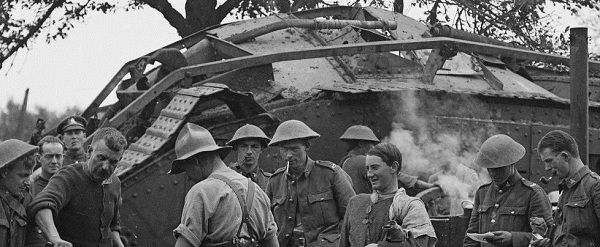 Zooming in on another area we can see a sergeant wearing a 2nd South Canterbury Regiment collar badge, and below his sergeant stripes he is wearing 4 service chevrons indicating 4 years service. (Service chevrons were approved September 1918, General Order No. 430) 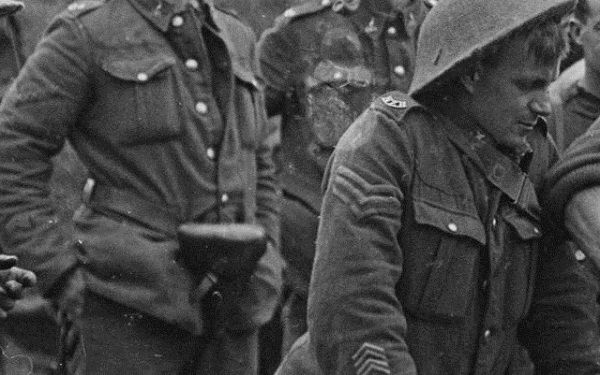 Zooming in on another area we can see two men wearing the crossed flags signallers qualification badges, the one on the left being a cloth version and the one on the right is brass. The chap on the right is wearing a 12th Nelson Regiment collar badge, and interestingly, he is also wearing a 12th Nelson Regiment cap badge on his tunic pocket.  The last but most important section to zoom in on, shows the cook (the one wearing the lemonsqueezer) wearng a souvineer badge belt. 
|
|
#22
|
||||
|
||||
|
Quote:
I started collecting and having an interest in New Zealand badges in the early eighties.I had "The Regimental bages of New Zealand'' by David Corbett,and a photocopy of the ''Record of the Expeditionary Force of the NZEF''as references.I can see how other collectors made the mistake of the 5th Wellington ,given they were the only references of the time that inferred that the 1923 badges were WW1. |
|
#23
|
||||
|
||||
|
Iain, the Wellington Militaria Collectors Club had its Christmas luncheon just this Sunday at fellow forum member Wayne Ihaka's house.
Interestingly, Wayne brought out a folder of A4 size photos of various NZ badge collections, which just happened to include a photo of your own collection. Have you sourced a set of 5th Wellington badges yet? or are you going to play the "my collection is 1911 to 1953" card? 
|
|
#24
|
||||
|
||||
|
You have got me there Brent.
As i say,this information i didn't have when i started collecting and put my board together,definately better educated circa 2012 than i was in 1982.That particular photo was taken in 2008 ,and while i haven't tidied that ''snafu'' up there are other gaps filled.Technically i should take of my Cook Island company cap badge as well. ? Still looking for an ELO cap,a 19th MR reinforcements cap and NZ cyclist company to have no more room.Will start another board after that. cheers Iain photo of collection in 2008,most gaps filled now * snafu ,2nd NZEF army slang ,arconym,''So not another F#*k up'' Last edited by pukman; 30-11-12 at 08:57 AM. |
|
#25
|
||||
|
||||
|
Private Henry Herbert Gill, Service No. 62300, C Company, 30th Reinforcements, Canterbury Infantry Regiment.
The last of my WW1 NZ badge collections to share is that of Private Henry Herbert Gill. Henry “Bert” Gill originally from Grovetown near Blenheim, was a joiner by trade and was living and working as a carpenter in Hamilton when he married Francis Sophia Brewster on the 1st March 1916. Their daughter Nancy Erica Gill was born the following year on the 28th March 1917. In July 1917 Bert Gill (conscripted by ballot) was called up for service as part of the Waikato (Quota) section of the Thirty-second Reinforcements. (Berts brother, William Gill (31490) also served during WW1.) Private Henry Herbert Gill. Date of commencement of service.— 15th June 1917. (Attached Thirty-second Reinforcements) Posted to “C” Company 30th Reinforcements.— 26 July 1917. Photo of Private Henry Gill 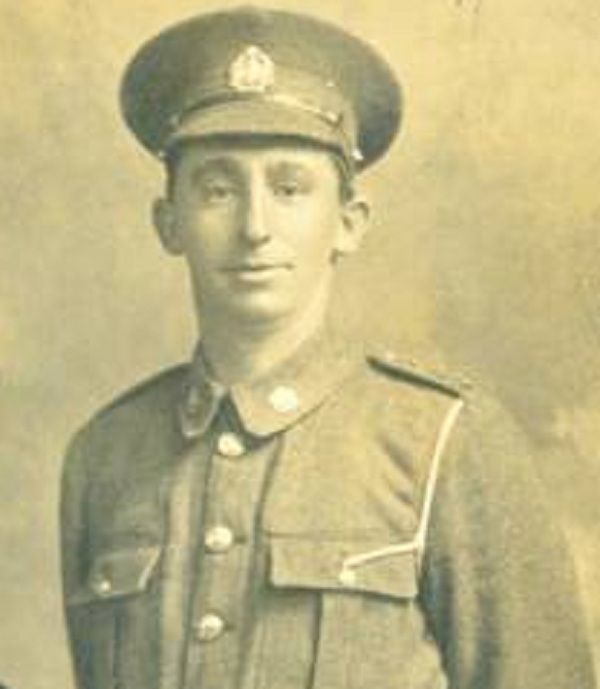 Reinforcement badges belonging to Private Henry Gill (Auckland War Memorial Museum Collection) 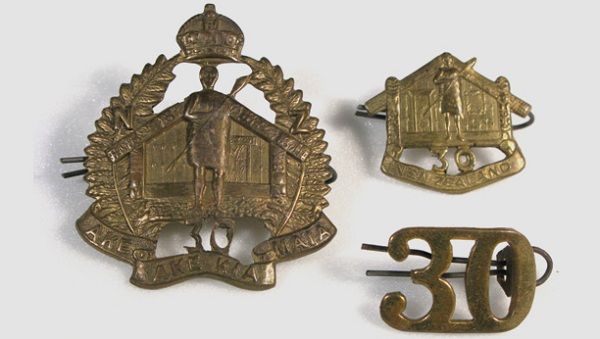 Embarked with “C” Company, Canterbury Infantry Regiment, 30th Reinforcements.— 13th October 1917. Disembarked in Liverpool.— 8th December 1917. Arrived in Sling camp.— 9th December 1917. Posted to 4th Reserve Battalion Canterbury Infantry Regiment.— 11th December 1917. Embarked for France.— 14th February 1917. Attached Canterbury Infantry Regiment.— 19th February 1917. Posted to 1st Company, 2nd Battalion Canterbury Infantry Regiment.— 23rd February 1917. Hat badge belonging to Private Henry Gill (Auckland War Memorial Museum Collection) 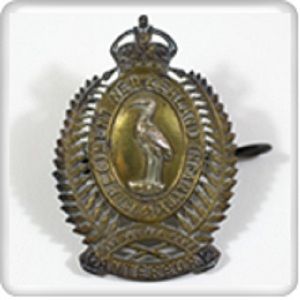 Wounded in action in France .— 26th August 1918. Reported “Still dangerously ill, improving”.— 15th September 1918. “In his final letter home, dated 30th September 1918, Bert was still optimistic about returning to his family, including the daughter who was just 6 months old when he left New Zealand in October 1917.” Died of wounds at No. 8 General Hospital Rouen.— 2nd October 1918. The following leather money belt (Auckland War Memorial Museum Collection) is described as being “probably acquired by Bert while in France.” 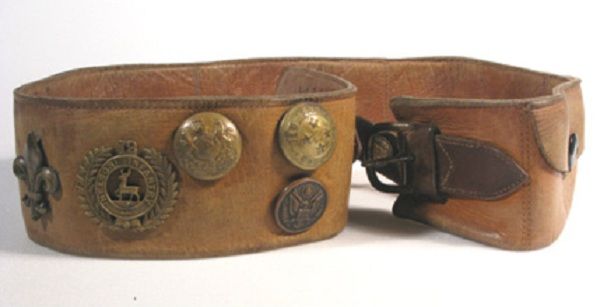 The inscription on the belt suggests that he had the belt prior to embarking for overseas. 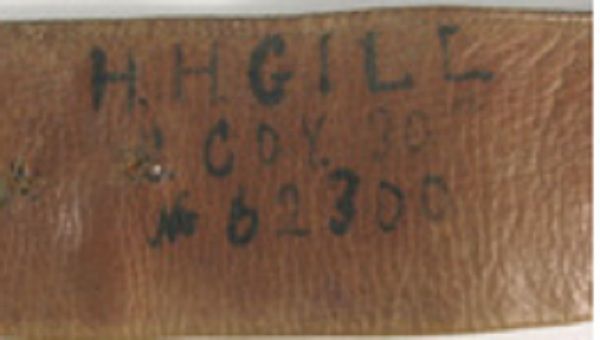 The following links to badges collected by Henry Gill are well worth of a look, especially the second link. http://www.aucklandmuseum.com/?t=885 http://www.aucklandmuseum.com/?t=819 Last edited by atillathenunns; 20-07-13 at 02:27 AM. |
|
#26
|
||||
|
||||
|
Throughout the duration of the first world war, New Zealand territorial regimental badges were in short supply.
At the beginning of WW1, pre-war stocks of regimental badges were in most cases depleated after supplying badges to the NZEF Main Body and their 1st Reinforcements. The following document is dated the 1st December 1914, and was sent to the NZ Defence HQ in Wellington. It is signed by Captain Charles Eric Andrews NZSC, on behalf of Lieutenant-Colonel Edmund Robert Bowler, who was the Commanding Officer of the 2nd Reinforcements. 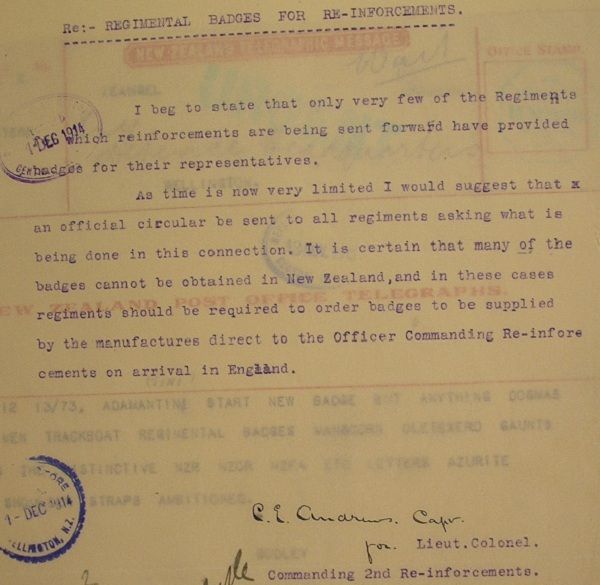 To cut a long story short, most of the NZ territorial regiments obtained their badges from J. R. Gaunt in England, who at the time were the NZ Defence Forces approved supplier of military badges. Taking into account the production difficulty to manufacture a supply locally in New Zealand, of what would entail the cutting of at least 74 new badge dies. It was decided by the NZ Defence HQ, that instead of Gaunt sending regimental badges to New Zealand, they would send them to the NZ assembly camps in England and Egypt, where they could be ordered by Regimental HQs as needed. For the territorial regiments in New Zealand who were still receiving recruits through compusory military service, most regiments continued to order their badges from Gaunt. On the 16th October 1915, the NZ High Commissioner in London (Mr MacKenzie) reported that “due to loss of dies by fire,” (At Gaunts factory) that he was finding some difficulty in supplying regimental badges. Although it is only my opinon, all information that I have seen, seems to suggest the Gaunt fire was the point when Regimental badges started to be produced in New Zealand. Interestingly, a non-commissioned officer of the 2nd (South Canterbury) Regiment, who was serving as a territonal in New Zealand towards the end of WW1, mentions indirectly that badge collectors were partly to blame for regimental badge shortages.— “The badges of that regiment were unprocurable. The badges were of pleasing design, in the shape of a Maltese cross with a kiwi in the centre. They changed hands privately for as much as £2 10s a set.” Also of interest, is that at the beginning of WW2, it was said by soldiers of the first echelon, during their final leave at Christmas, that they had been told that.— the issue of the distinctive 2 N.Z.E.F. (Onward) badges had been withheld to prevent the practice of “souveniring.” |
|
#27
|
|||
|
|||
|
Hi there,
Alfred Kennedy Sloan was my grandfather - my mother died this week and we have his Lemon Squeezer hat at home with a South Canterbury Badge on it. I have his war record but never knew he had a collection of badges etc. He had a large brass shell casing at his home he used to keep his money in but he wouldn't ever really talk about WW1. He was in Gallipoli with his Uncle Sgt Major John Dunstan Lawley LEECH who was killed there on the 25th May 1915. JDL Leech was in the Auckland Regiment, I have all the medals for JDL Leech and his brother EDH Leech from the Boer War and WW1. Why would Alf have a South Canterbury Badge on his Lemon Squeezer?? He died in 1962 and Montague (Monty) Haydon Sloan was born on the 14th of January 1894 and died in Australia under the name Montague Arnold Spencer in 1980. Quote:
|
|
#28
|
||||
|
||||
|
Quote:
Sympathies for your recent loss. I have not been able to locate your grandfather’s service records on archives, so cannot offer much on why his Lemon Squeezer hat sports a South Canterbury Badge. However if you send me a PM to organise a copy of his records, and pictures of the hat, I may be able to help. In regards to the regimental badges that formed part of your grandfather’s collection, these would have been collected prior to his landing at Gallipoli, and are, (until an earlier collection can be found) the earliest collection of military badges, that were collected during the war, to be publicly displayed in New Zealand. Now as for your grandfather’s brother, old Monty, he is certainly an enigma. Interestingly, you mention he was born on the “14th of January 1894,” yet his attestation records, which Monty himself signed on the 26th of October 1914, give his date of birth as being the 15th of November 1894. And then we have the following, which was published on page 4 of the Free Lance newspaper, and is dated the 5th October 1917. 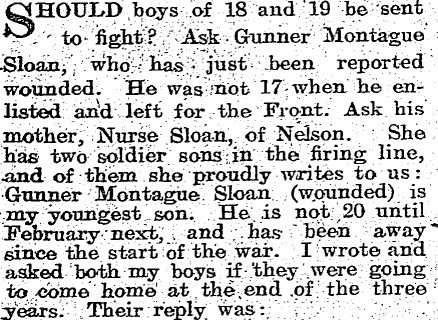 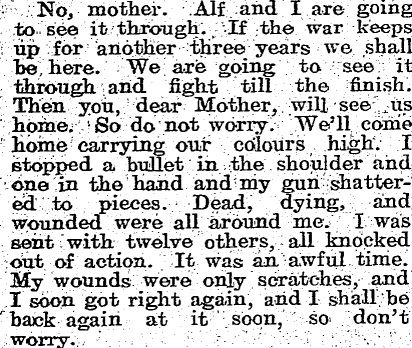 
|
|
#29
|
|||
|
|||
|
Hi thanks you for your reply. I am afraid that my G Grandmother must have taken license in the heat of her letters (there were two to the Freelance) and mixed up Monty's age. He is on the NZ Historical BMD site and his birthdate is really 14 January 1894. She had 7 children and 4 of them died. She was a midwife and had birthed hundreds of children by the time of the war!
I have a picture of the Lemon Squeezer and badge but not sure how to put them on here. It has his name and number in it. I have some pictures of him in uniform and in France as well. I have sent you a personal message. His war record that i have is typed and i am not sure why it is not available at Archway. I obtained it in the 1980's. Cheers for your help Last edited by Sunbeam; 21-07-13 at 12:46 AM. Reason: I have sent a Personal message |
|
#30
|
||||
|
||||
|
When I put together post #13 on Sergeant Alfred Kennedy Sloan, his service records were not available, so my information was very short.
Now thanks to Sunbeam, I have been given a copy of Alf most impressive service record that includes information regarding his service with the Nelson National Reserve during WW2, but more importantly, we get to share some photos of the man himself. This first photo shows Alf on the left wearing 12th Nelson Regiment collar badges, and two mates without insignia. Alf is wearing the typical British issue 1915 version of the Model 1907 British Other Ranks (five button) Service Dress Jacket. The chap on the right is wearing the British Other Ranks (five button) ‘Simplified/Utility’ Service Dress Jacket, which was introduced due to war shortages. It has no rifle patches (reinforcing material extending from the top pockets over the shoulders) or box pleats on the pockets. Photo taken France 1917. 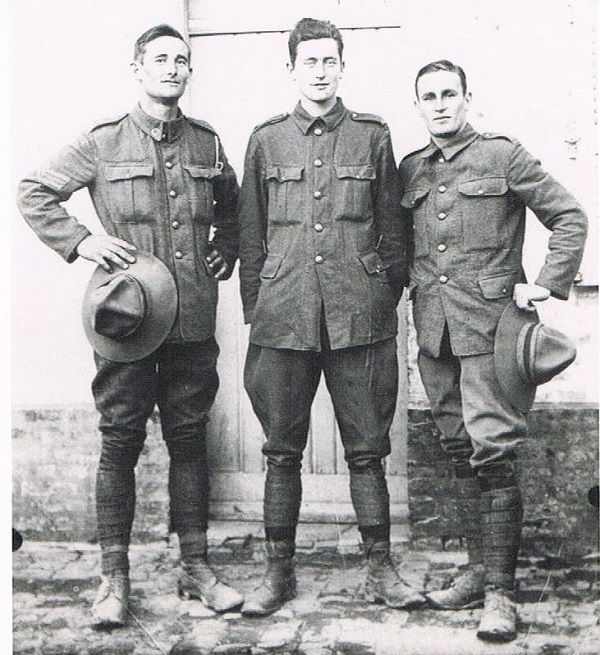 This second photo shows Alf wearing what appears to be the British issue 1917 version jacket, which has the slightly smaller collar size. (note the different positioning of the 12th Nelson Regiment collar badges compared to the other photo) On the lower left arm Alf is wearing a wound stipe, and on the lower right arm Alf is wearing one red service chevron indicating 12 months overseas service beginning on or before the 31st December 1914, and three blue chevrons which indicate a further 3 years of overseas service. The lemon squeezer that Alf is wearing has a 12th Nelson Regiment hat badge attached to an infantry puggaree (khaki/red/khaki).The two metal air vents located on both sides above the puggaree, indicate that the hat was made by a British manufacturer. 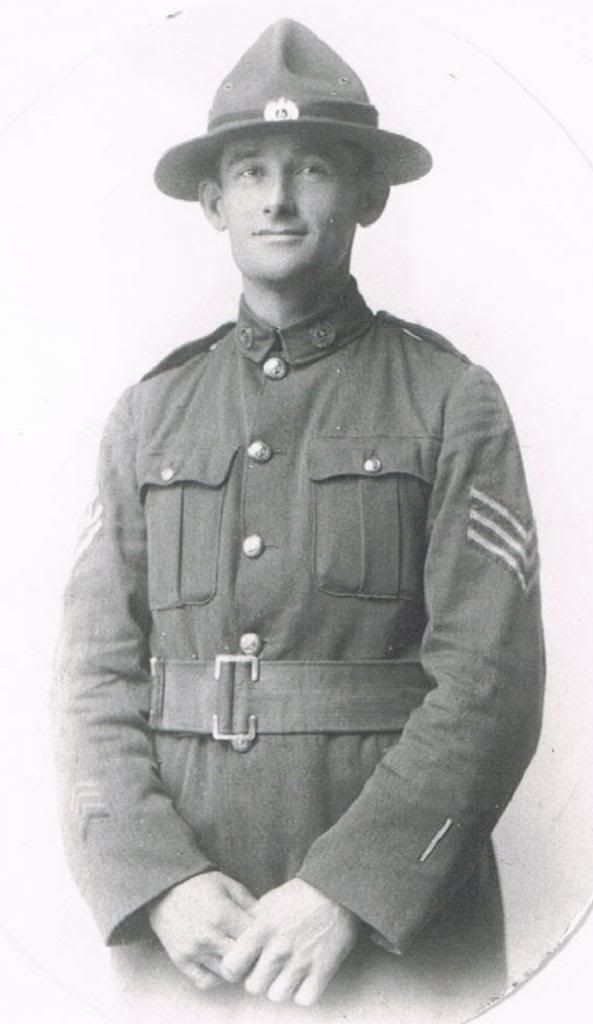 So that brings us to Alf’s lemon squeezer hat, which currently has a 2nd (South Canterbury) Regiment badge and was first mentioned in post #27. From what I can see from the following photos, and from others that Sunbeam has sent me, the hat has no makers marks, and is typical of NZ felt hats produced between 1915 and 1939. The puggaree appears to be original to the hat, but the 2nd (South Canterbury) badge however, is attached by a match stick instead of a brass split pin, so I have serious suspicions that it is not original to the hat. If anybody else would like to offer up their opinion, or even just a correction to any of my observations, please do speak up.  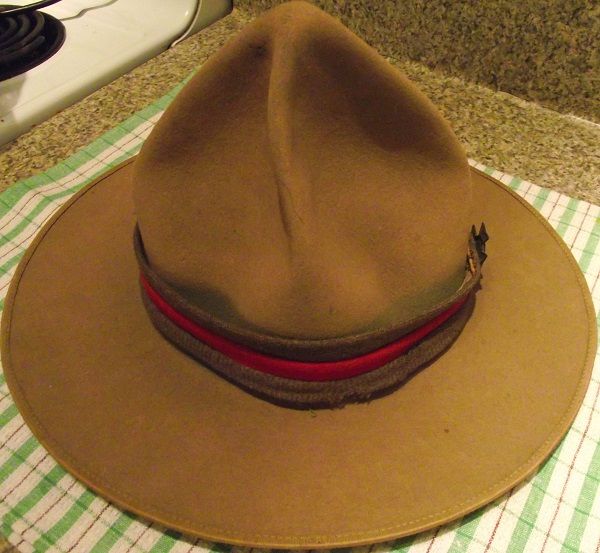 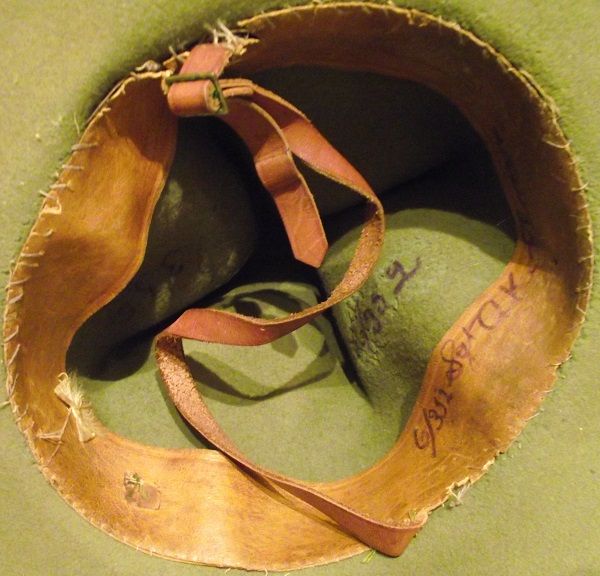 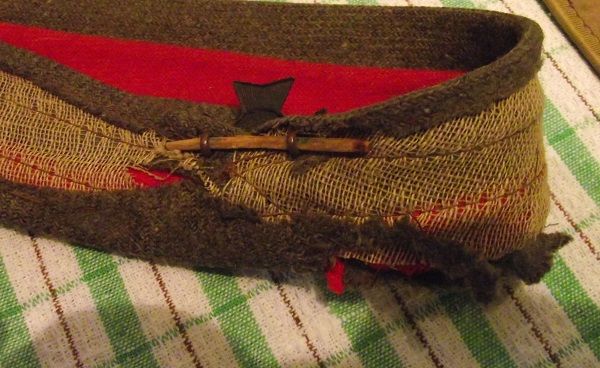
|
 |
|
|
 |